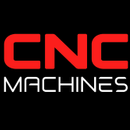A Comprehensive Guide to the History of Machining: From Its Origins to Modern Advances

History of Machining: From Origins to Modern Advances
Origins of Machining
Machining, the process of shaping materials using various tools, has roots tracing back to ancient civilizations. Early forms of machining involved simple hand tools and techniques to shape stone, wood, and metal. The first recorded use of a lathe, a fundamental machining tool, dates back to ancient Egypt around 1300 BCE. These early methods laid the groundwork for the sophisticated machining processes we use today.
Development in the Industrial Revolution
The Industrial Revolution in the late 18th and early 19th centuries marked a significant turning point in the history of machining. The invention of steam engines and the development of machine tools like the screw-cutting lathe by Henry Maudslay revolutionized manufacturing. These advancements allowed for more precise and efficient production, leading to the mass production of parts and the growth of various industries.
Contributions from Different Countries
United Kingdom
The UK played a pivotal role during the Industrial Revolution, with significant contributions from inventors like James Watt and Joseph Whitworth. Watt's steam engine and Whitworth's standardization of screw threads were critical advancements.
United States
The US emerged as a machining powerhouse in the 19th and 20th centuries. Innovations such as the milling machine by Eli Whitney and the development of interchangeable parts greatly enhanced manufacturing efficiency. The introduction of numerical control (NC) in the 1950s, and later computer numerical control (CNC), further revolutionized machining by automating the control of machining tools.
Germany
Germany's contributions include the development of advanced precision tools and high-speed machining technologies. German engineering excellence in machining has been a significant factor in the automotive and aerospace industries.
Japan
Japan became a leader in machining technology post-World War II, with companies like Toyota and Fanuc pioneering just-in-time manufacturing and robotics. Japanese innovations in CNC technology and automation have had a global impact on manufacturing processes.
Modern Machining
Today, machining is a highly advanced field incorporating cutting-edge technologies like CNC, robotics, and additive manufacturing. Modern machining centers are capable of performing multiple operations with high precision and speed. Computer-aided design (CAD) and computer-aided manufacturing (CAM) software enable complex designs and efficient production planning.
Key Technologies in Modern Machining
CNC Machining
CNC machines are the backbone of modern machining, allowing for precise and repeatable production of complex parts. These machines are used in various industries, including aerospace, automotive, and medical devices.
Robotics
Industrial robots enhance machining operations by automating repetitive tasks, improving consistency, and reducing labor costs. Robots are often integrated with CNC machines for tasks such as loading and unloading parts.
Additive Manufacturing
Also known as 3D printing, additive manufacturing complements traditional machining by allowing for the creation of complex geometries and reducing material waste.
AI and Machine Learning
Artificial intelligence and machine learning are increasingly being integrated into machining processes for predictive maintenance, process optimization, and quality control.
From its ancient origins to the sophisticated processes of today, machining has continuously evolved to meet the demands of various industries. Contributions from different countries have shaped the development of machining technologies, leading to the advanced and highly efficient systems we rely on today. Modern machining continues to innovate, incorporating new technologies to enhance precision, productivity, and flexibility in manufacturing.


